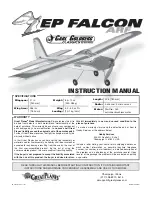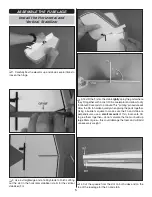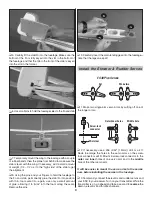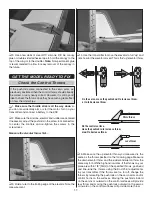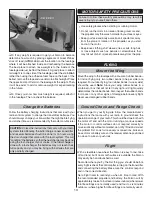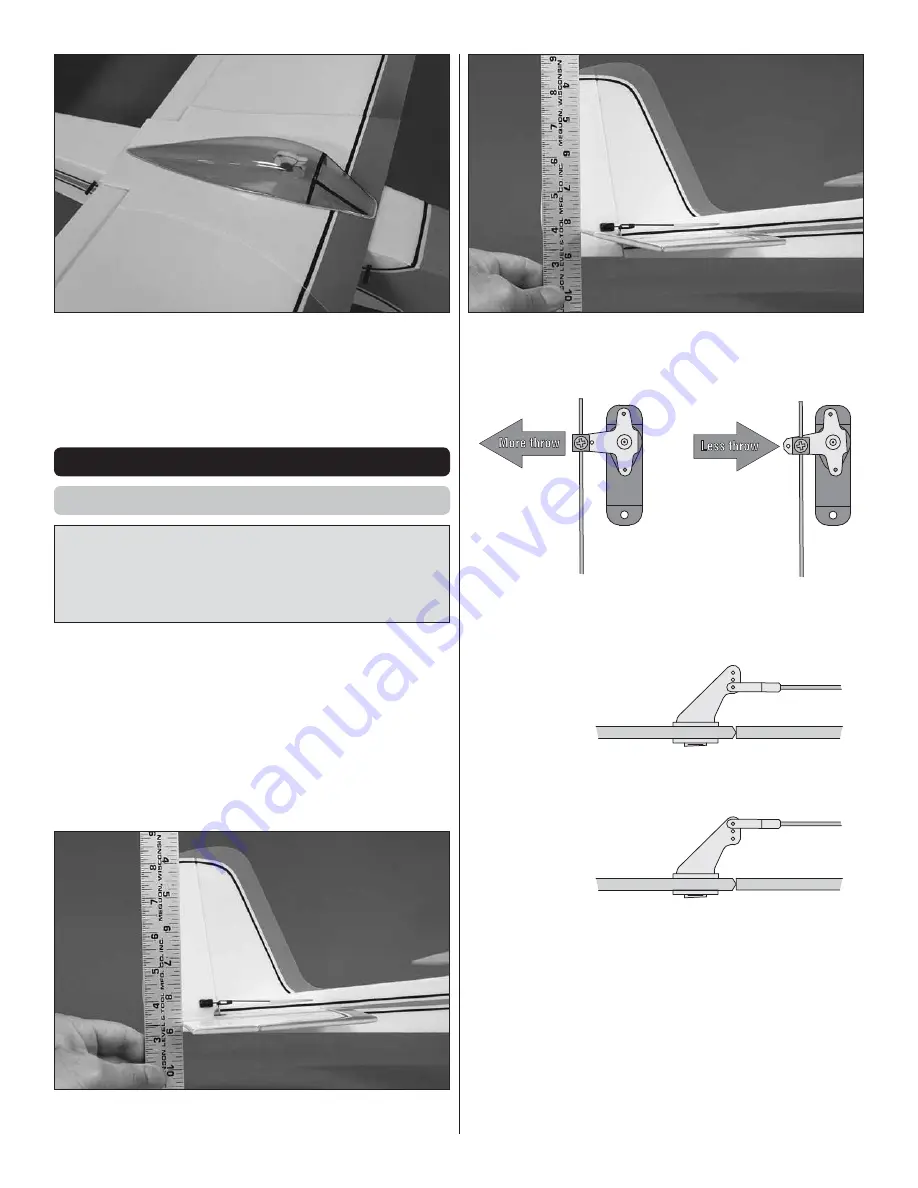
11
❏
9. Use a few dabs of clear RTV silicone, R/C 56 canopy
glue or double-sided adhesive tape to hold the canopy to the
top of the wing or to the doubler.
Note:
Non-permanent glue
is recommended to allow for easy removal of the canopy in
the future.
GET THE MODEL READY TO FLY
Check the Control Throws
If the pushrods were connected to the servo arms as
previously illustrated, then the control throws should already
be correct, or very nearly correct. However, it is still a good
idea to check the throws since they have such a great effect
on how the model fl ies.
❏
1.
Make sure the throttle stick is all the way down
so
you do not accidentally arm or start the motor. Turn on your
transmitter and connect a battery to the ESC.
❏
2. Make sure the ailerons, elevator and rudder are centered.
If necessary, adjust the pushrods in the screw-lock connectors
to center the controls and re-tighten the screws in the
screw-locks.
Measure the elevator throw fi rst…
❏
3. Hold a ruler to the trailing edge of the elevator. Note the
measurement.
❏
4. Use the transmitter to move the elevator to full “up” and
note how far the elevator moved. This is the “up” elevator throw.
On the servo, move the pushrod
out
to increase throw,
or
in
to decrease throw.
On the control surface,
move the pushrod
in
to increase throw,
or
out
to decrease throw.
More throw
Less throw
❏
5. Make sure the up elevator throw you measured is the
same as the throw specifi ed on the following page. Measure
the down elevator throw and the rudder and aileron throw the
same way for both the high and low rates. If the throws on your
plane are within 1/8" [3mm] of the specifi ed throws, go ahead
and fi ne-tune the throws using the End Point adjustments
in your transmitter. If the throws are too far off, change the
throws by relocating the pushrods on the servo arms and/or
control horns on the surfaces. Moving the pushrods inward
on the servos or outward on the control surfaces will provide
less throw and moving the pushrods outward on the servos
or inward on the control surfaces will provide more throw.
Summary of Contents for EP FALCON ARF
Page 16: ......

